The Maritime Museum of Barcelona maintains a group of vessels on the water that allow a first-hand experience of what ships are, how they work and how they are operated. Historical and traditional vessels are living witnesses to maritime culture and history. By keeping them in operation, the Museum preserves our material heritage (the vessel itself and its equipment), as well as immaterial heritage like construction techniques, trades or sailing methods. This is why recuperating and protecting traditional and historic vessels is one of the priorities of the Museum.
Schooner Santa Eulàlia
The first historical vessel recuperated, restored and re-launched by the Museum was the Schooner Santa Eulàlia. With the near-disappearance of the great tall ships that had made up the Catalan fleet in the past, some began to consider the possibility of recuperating a pailebot, a type of schooner typical of the Western Mediterranean that is very representative of coastal trade. With this new acquisition, the Museum took on one of the most significant and difficult challenges in its history: the recuperation and restoration of a great historical tall ship. This project, the first of its kind in Spain, also aimed to be a first step in the recovery of our valuable floating heritage.
The schooner Santa Eulàlia was launched in January 1919 from the beach of Torrevieja. It was a three-masted ship with schooner rigging and the name Carmen Flores. Since then and throughout its life, this ship has undergone several transformations and name changes. From 1928 to 1975, after having a motor installed, it became a motor sailboat with the names Puerto de Palma and Cala San Vicenç. After 1975, with the name Sayremar Uno, it was transformed into an auxiliary sailboat for underwater work, which was what it was used for when the Maritime Museum of Barcelona acquired it in 1997 at public auction.
After gathering historical and technical information that allowed for a close idea of what the ship originally looked like, in 1998 restoration and reconstruction work began, conserving as much of the original ship as was possible. Some parts had to be remade, like the masts and cordage. At the same time, its use as an active ship was planned, so that the restored schooner could be visited in the port and, above all, sailed. Once restored, the schooner was renamed Santa Eulàlia in honour of the co-patroness of the city.

Pere de Prada

The Santa Eulàlia has become the Museum’s flagship, and is an essential piece in all manner of educational programs and maritime activities for students and citizens. It can be visited at the Moll de la Fusta (Bosch i Alsina) in Barcelona’s Old Port, except when it is out sailing.
On June 28, 2011, it was declared a Cultural Asset of National Interest by the Government of Catalonia, making the schooner a first-class national monument.
Current situation: operative.
Visit & schedule: click here
Sailing trip: Information, prices and sign-up: click here
The Schooner is not accessible for people in wheelchairs
Far Barcelona
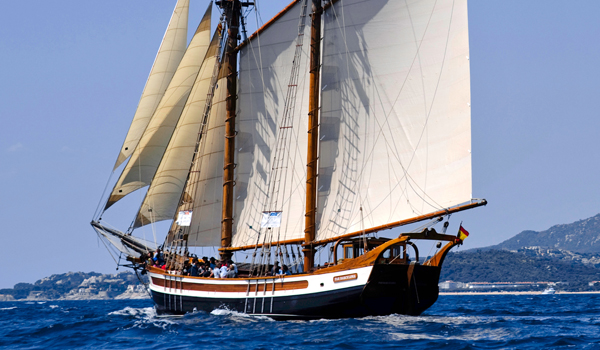
This craft with schooner rigging is an old Norwegian Jakt built in Hardanger Fjord in 1874. Its original name was Anne Dorothea. After a long career as a merchant ship carrying codfish, wood and coal, it was brought to Spain for restoration. From 1999-2006, the Workshop School of the El Far Consortium restored it, allowing it to sail once again. Since 2016 it has been part of the Maritime Museum’s collection.
Current situation: undergoing repairs and maintenance.
Far Barceloneta
This is a recreational yacht with a ketch rig, built at the Miquel Corbeto shipyards in Barcelona in 1915. Christened the Norten, for years it was used as a recreational boat until it was given to the El Far Consortium in 2007 for use in educational activities. It has been in the Maritime Museum’s collection since 2016. Current situation: undergoing repairs and maintenance.

Far Formentera
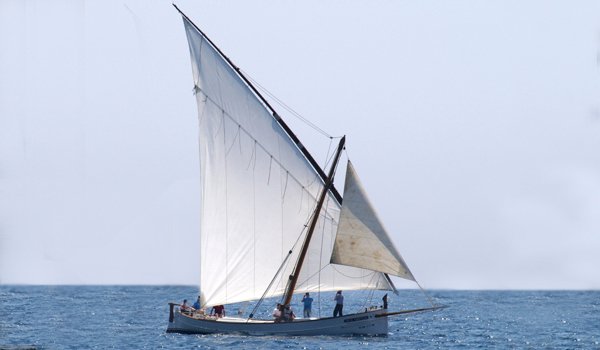
The Majorcan llagut Far de Formentera was built at Astilleros Palma in Majorca in 1922, as a fishing boat. In 1958, it began to be used by the Port Group of the Balearic Islands, supplying the lighthouses in the archipelago. In 1991, it was given to the El Far Consortium for use in educational programs. Since 2016, it has been part of the Maritime Museum’s collection. Current situation: operative and waiting for a new mast to be fitted.
Far Cabrera
The Menorcan llagut Far de Cabrera was built at Astilleros de Ciudadela in Menorca in 1911, as a fishing boat. In 1957, it began to be used by the Port Group of the Balearic Islands, supplying the lighthouses in the archipelago. In 1991, it was given to the El Far Consortium for use in educational programs. Since 2016, it has been part of the Maritime Museum’s collection. Current situation: undergoing repairs and maintenance.
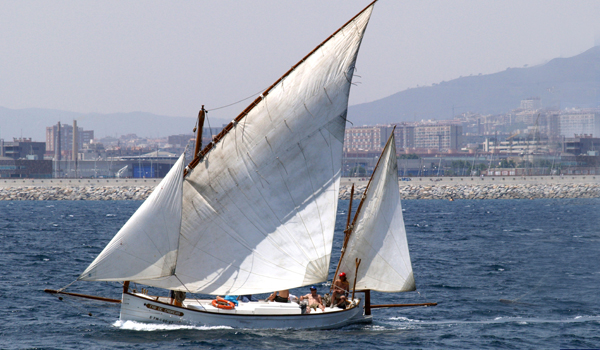
Santa Espina
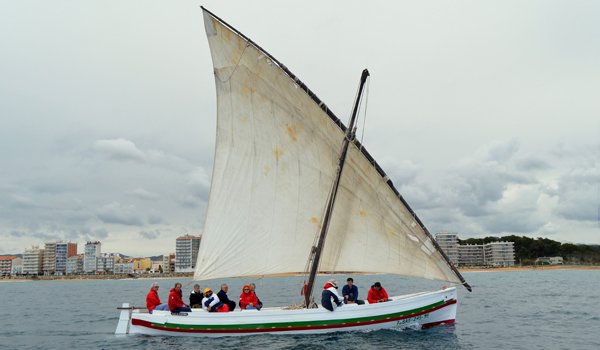
The Santa Espina is a llaüt de sardinal, built in 1928 in Banyuls-sur-Mer by the shipwright Bonaventura Colomines. It worked under the name Francis until the 1970s and then sat half-abandoned on the beach of St. Cyprien until 1975, when it was bought by Clovis Aloujes. Aloujes repaired it and sailed it once again under the name Santa Espina. This craft played an essential role in the long process of recuperating traditional navigation and the old lateen-sail boats. In April 1995, Clovis Aloujes turned it over to three partners, and since 2016 it has been part of the collection of the Maritime Museum of Barcelona. Once its restoration is complete, it will once again take to the water as a traditional sailing school. Current situation: undergoing restoration.
Lola
This is the only surviving example in Catalonia of an auxiliary vessel or llagut de foc (fire boat) used in pesca a l’encesa (fire fishing). This wooden llagut with a lateen sail and oars was built in Roses in 1906 by shipwright Pere Guitart Pujol. It displays the shapes, elements, materials and typical characteristics of this traditional type of Catalan fishing boat. At the end of 2009 its former owners, Vicente García-Delgado Sancho, Dominique Duniau and Ana Ribosa Fornovi, gave it to the Maritime Museum of Barcelona. The Museum keeps Lola in working condition, continuing to preserve it as a piece of floating maritime heritage and using it to promote part of our traditional maritime culture. La Lola is a cataloged property of Catalan cultural heritage (BIC), according to a resolution of February 26, 2009. Current situation: operative.
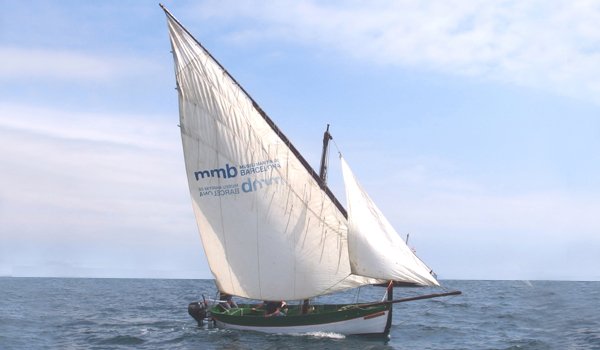
Drac
Drac is a Dragon-class regatta sailboat built at the Borresen shipyards in Denmark in 1966. The Dragon class, which was used in the Olympics from 1948 to 1972, had a series of particular characteristics when compared to other sailboats, and was for a time in danger of being lost. In 2003, former owners Josep Maria and Enric Montal Costa donated it to the Museum. It was restored at the Museum’s shipyards, and in April 2008 it sailed once again. Christened Drac, it has a volunteer crew that sails it on a regular basis and has it participate in regattas for classic sailboats. Current situation: operative.
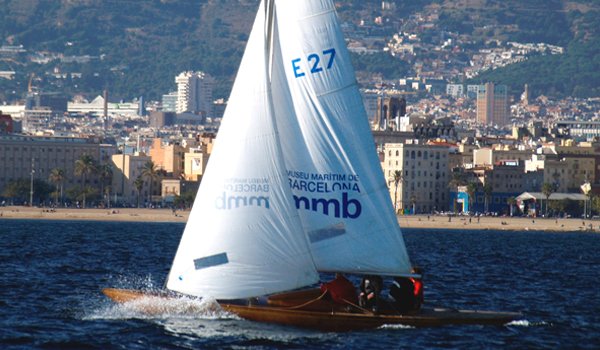
Pollux
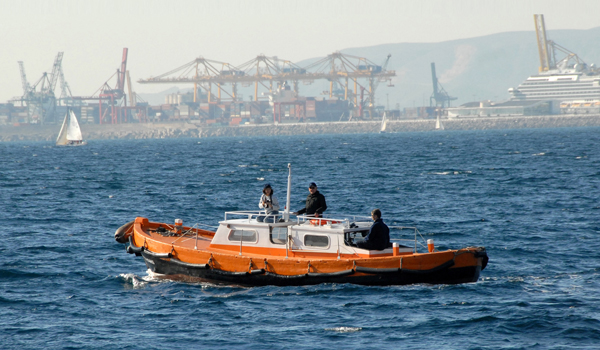
This is a pilot boat built in 1985 that operated in the Port of Barcelona. Although it is a modern craft, both in terms of the materials and construction techniques used, it is a good example of the vessels employed by Barcelona’s pilots practically since they began to use motorized boats. In 2001, the Corporation of Pilots of the Port of Barcelona sold it to the Maritime Museum of Barcelona for a symbolic sum, and the Pòl·lux has been active ever since. It sails around the port on a weekly basis, and it provides support and assistance to the other vessels in the fleet. From a romantic point of view, it could be said that this pilot boat continues to perform the tasks it was built for. Current situation: operative.
Patapum
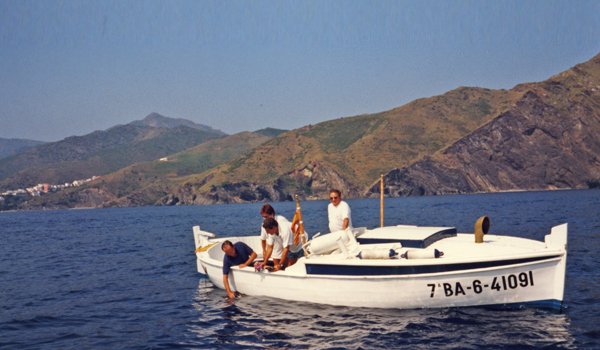
This wooden boat was built in Llançà in 1931 by order of Lluís Cabré Ycart (a customs agent based in Portbou starting in the 1920s), who wanted to use it as a leisure boat for his family during good weather. Cabré named the boat Patapum, as this was the sound made by its motor. The boat was maintained by three generations of the Cabré family, and was operational every single summer until 2007. In 2008, owner Catalina Cabré Basco sold the boat to the Maritime Museum. At the end of 2012, the complete restoration of the boat was completed by the Museum’s shipwrights. If you would like to see part of the restoration process, you can view this video Current situation: operative .










